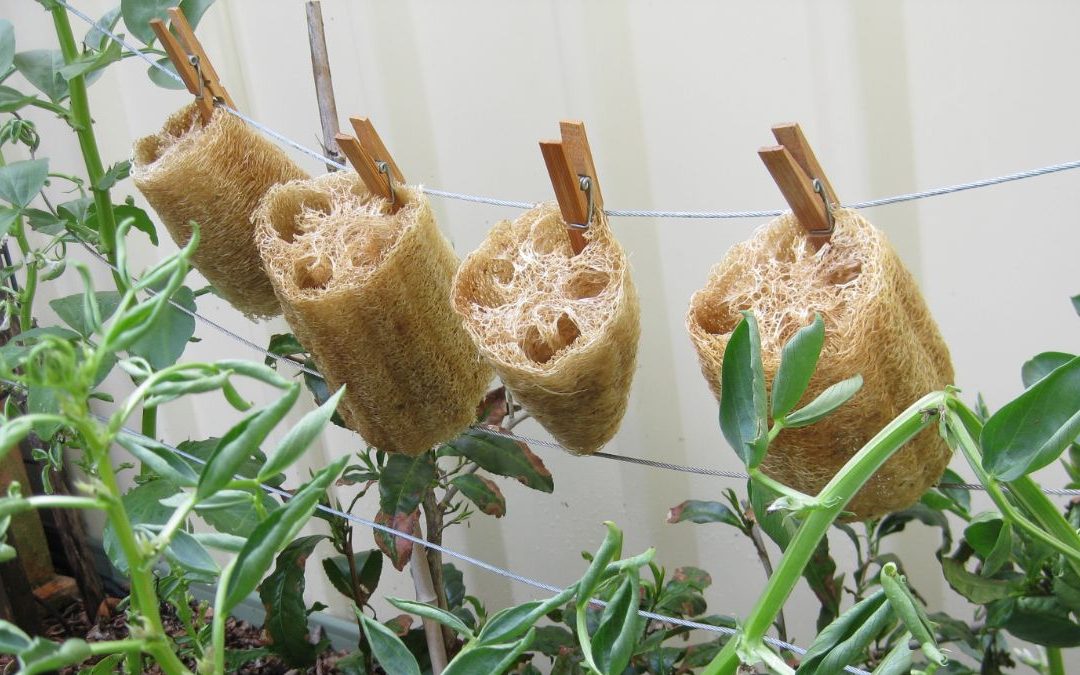A few years ago, a thrifty green-thumbed friend gave me a gift of a homegrown luffa. Isaac since discovered that it is amazing for scrubbing potatoes. With that knowledge, I guessed it was probably good for a few other scrubbing sponge uses. Inspired by my friend, I finally gave it a go to grow my own luffas for these wonderful reusable sponges.
Luffa Uses
- pot and pan scrubber
- kitchen utensil scrubber (so good at cleaning up a wooden egg flip)
- vegetable scrubber
- gentle exfoliating sponge
- bathroom sponge (e.g. for scrubbing vanity and bath)
- gifts
- FOOD (cook and eat like a zucchini – if you pick them earlier before they dry out into a sponge!)
Planting Luffas
- Plant seeds in a seed raising mix at a depth of approximately 2.5-3 times the size of the seed
- Protect germinated seeds from damage until strong enough to plant out in position
- Luffas are climbing vines – grow on a strong trellis in a sunny position
Harvesting Luffas
- To eat – harvest when they are the size of a zucchini and still feel solid (I haven’t tried this yet as I was sponge-greedy)
- To make a sponge – allow to dry out on the vine until the luffa feels light and the skin feels loose
More Use and Growing Info
- Gardening Australia Luffa Fact Sheet
- Eden Seeds product and growing information
- Ideal growing times and conditions for different areas
The luffa-growing process for us, in more detail
I found some luffa seeds online at Eden Seeds. The seeds took a couple of weeks to germinate (possibly because I was impatient and planting this first crop at the wrong time of year, or perhaps just the type of seed) and the emerging seedlings needed protection from slugs. The vine is very similar to a cucumber – best grown on a sturdy trellis.
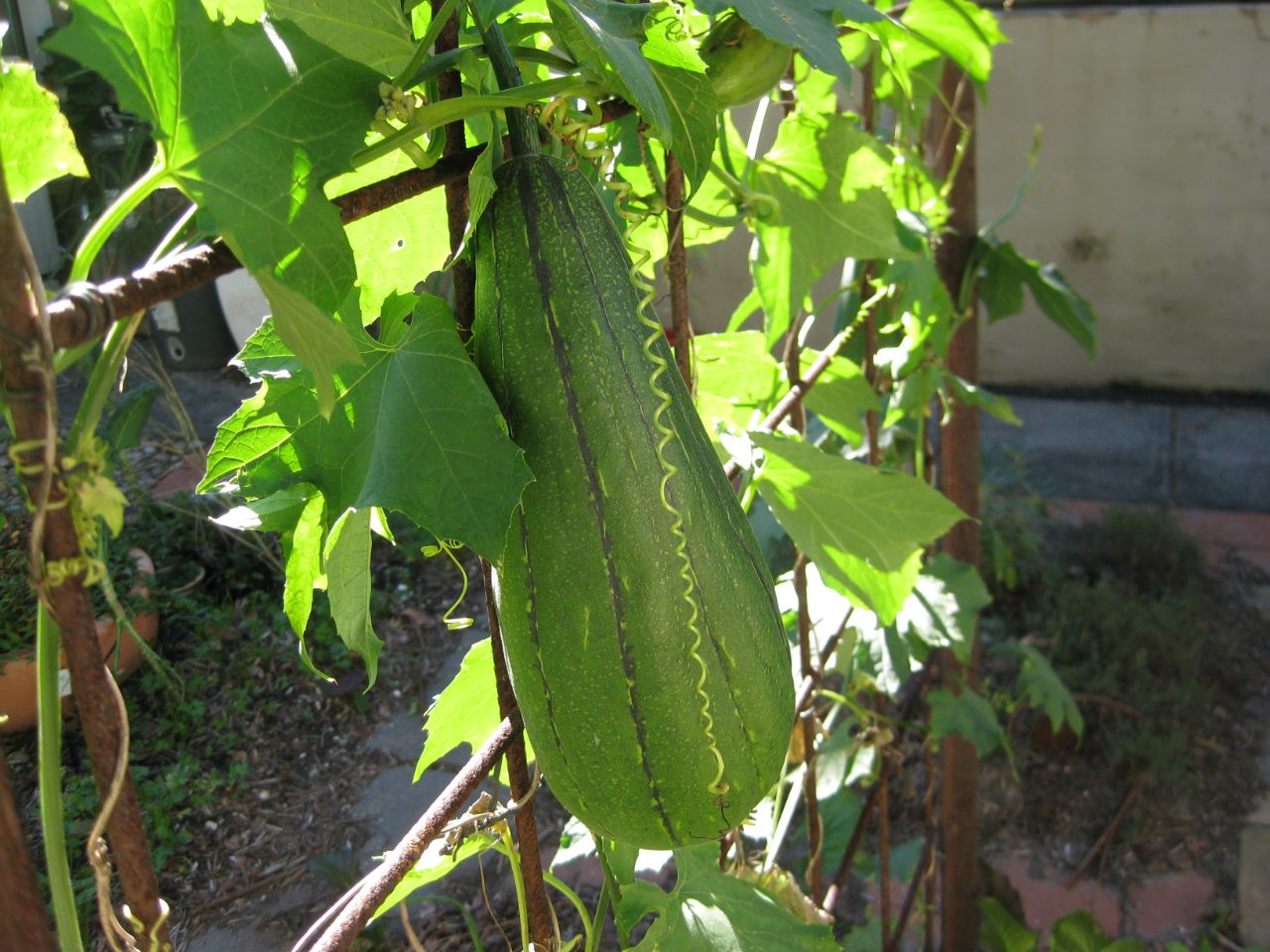
After the fruit had grown on the vine, they eventually dried out one by one. Once the skin was brown and dried out, they were ready to be picked. The first luffa to be picked even had a nice rattling sound of the seeds when I shook it. The second one didn’t have the same seed-shaking sound. The skin peeled off nicely and my homegrown luffa sponges were emerging. Most of the seeds were shaken out, and set aside.
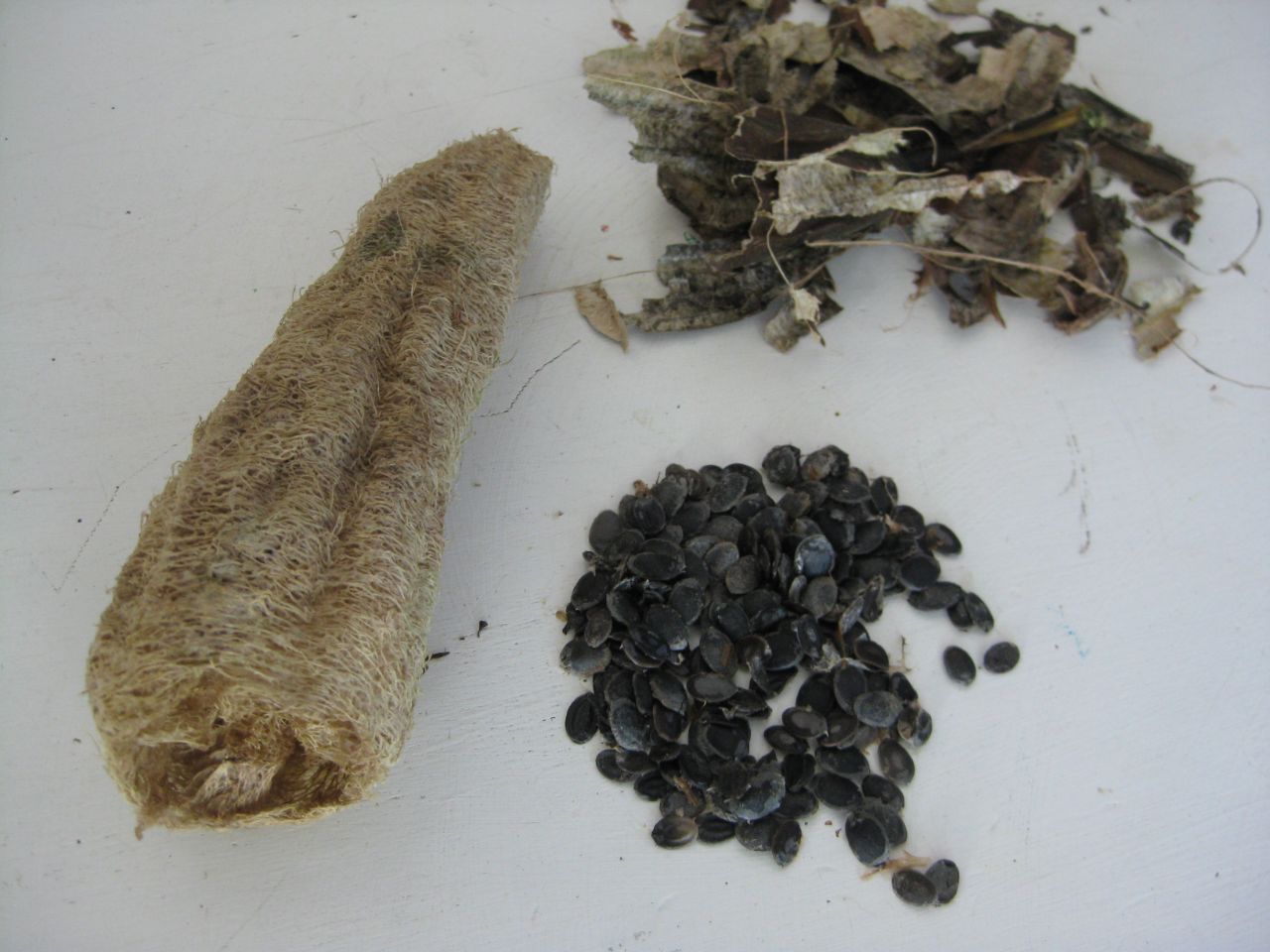
The size of the first two luffas was large enough to cut in half for a good sized sponge. From the many seeds, I could winnow out the damaged ones and keep the strong, plump ones for seed sharing and growing new plants.
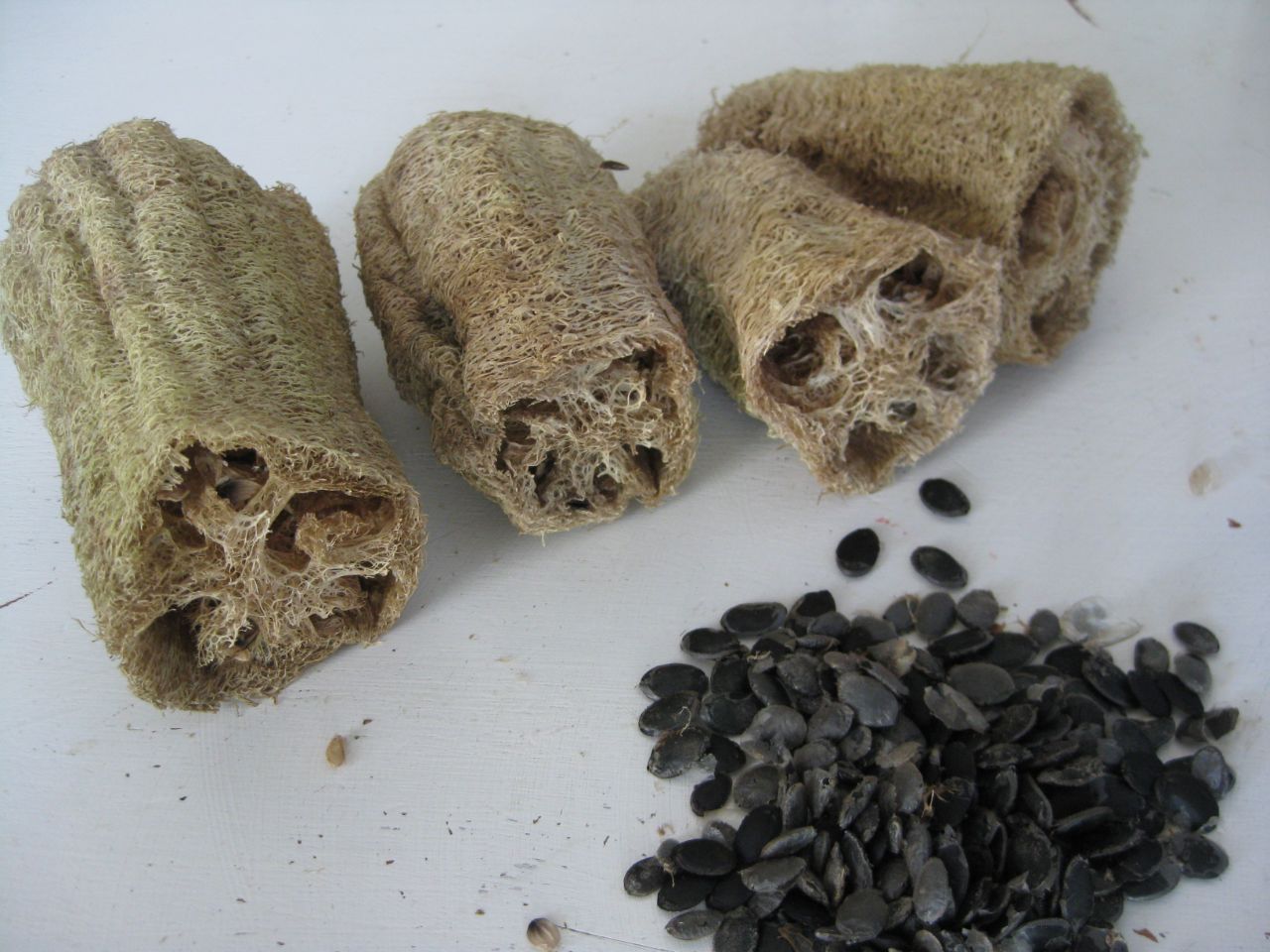
Finally, the luffa pieces needed a good wash. I washed them in water with a dash of vinegar and homemade dish soap (made from soap nuts). After hanging out to dry in the sun, they were now ready to use, or store.
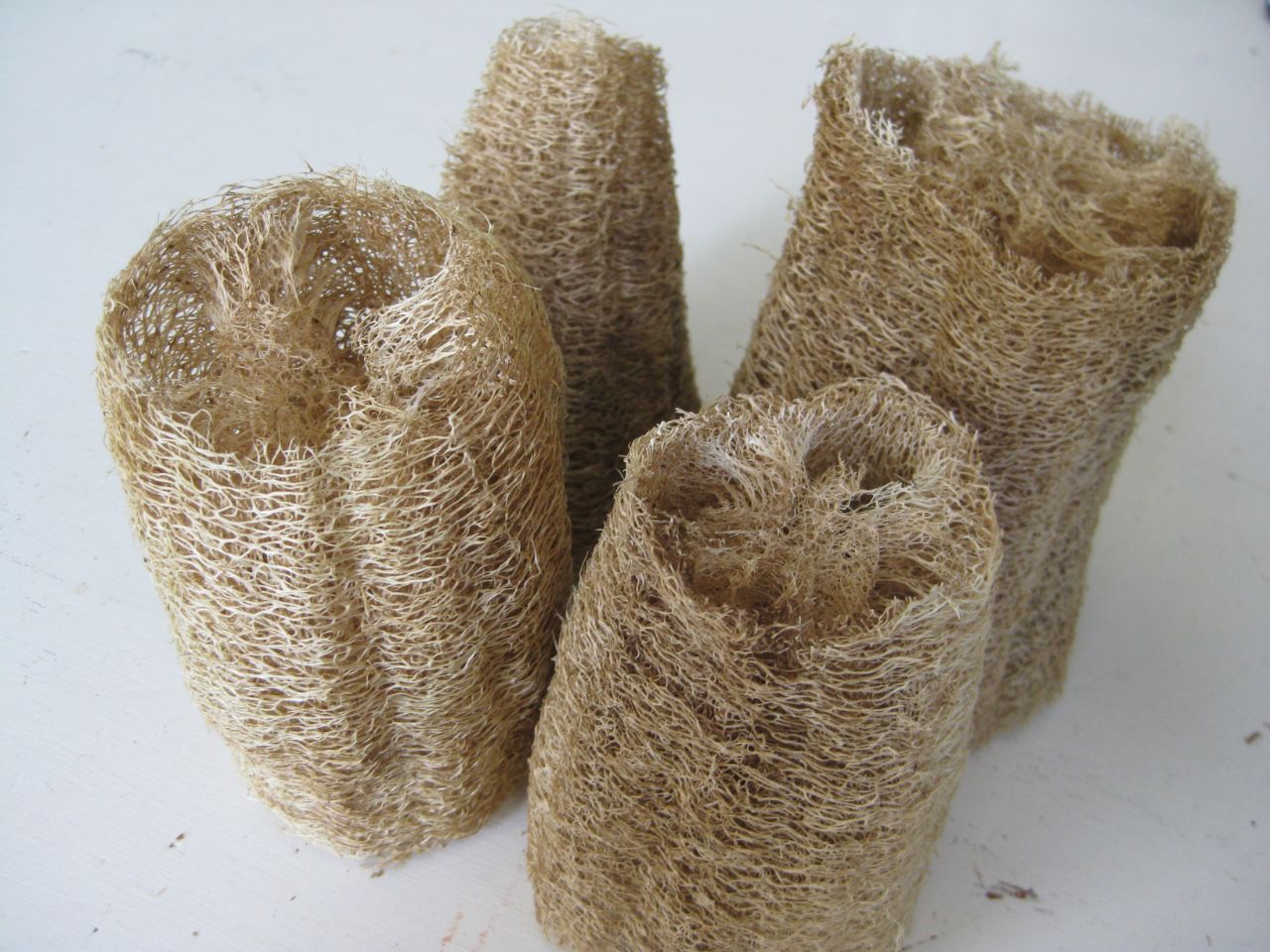
One has replaced our very worn out kitchen scrubber. An another has been assigned to the bathroom. It turns out these homegrown luffa sponges are effective to scrub away soap scum in the vanity sink. Just abrasive enough to to the job, and soft enough not to cause any damage.
Natural and reuable, these homegrown luffa sponges were so satisfying to grow and are fabulous to use. An added bonus is that a sponge like this reduces the need for a plastic-based alternative. And when using in the kitchen for scrubbing cooking implements or vegetables, it’s comforting to know that you are washing with something edible!

